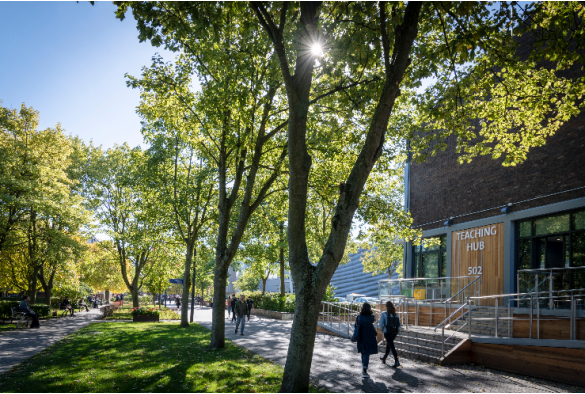
Each year, the University publishes information about its finances, which includes audited financial statements as well as information for students.
This information is available to all students and staff and can be accessed on our webpages.
Our total income in 2022/23 was £675.1 million. Our total expenditure of £664.8 million in 2022/23 was £10.3 million lower than our total income.
Our results include pension adjustments relating to non-cash movements in pension provisions which we exclude when calculating our underlying operating surplus.
Our underlying financial performance is sound with an underlying operating surplus of £10.8 million.
You can find out more about why generating surpluses in most years is an essential part of ensuring the financial health of our institution on our dedicated webpages.
Financial surpluses
The University of Liverpool is a ‘not for profit’ organisation which means that any annual operating surplus is reinvested in the University.
Generating surpluses in most years is an essential part of ensuring the financial health of our institution. Financial sustainability requires a position whereby the institution can cover operating costs, but also generate resources for investment. Our longer-term strategy is to achieve an underlying operating surplus of 5% in order to enable continued investment in strategic priorities. The current year underlying result of 1.6% includes growth in both income and expenditure as we have increased student numbers and research activity whilst incurring higher costs due to inflationary pressures and additional investment in strategic areas.
At the end of each financial year any recorded surplus is added to our reserves which are used to fund investment that can’t be met from our normal recurrent sources of revenue.
This includes:
- Safeguarding university finances against unforeseen adverse circumstances. These tend to be large, one-off unexpected costs; previous examples of this include the investment required to support our COVID-19 pandemic response.
- Funding large investments such as building and facility improvements, and enhancing digital technology. This includes making our buildings more energy efficient, improving accessibility for students and staff with disabilities, and improving the learning and research environment for all.
Preparing for the future
Capital investments are an important part of preparing the University for the future. These investments, which are not included in the expenditure for the year quoted above, or the pie charts below, total £72.3 million for 2022/23, and are funded mainly from surpluses made in previous years. This year the University has invested:
- £30.0m estate infrastructure condition programmes
- £19.1m software and capital equipment
- £5.0m central campus and student gateway
- £3.6m School of Architecture
- £2.5m Leahurst Campus lifecycle improvements and AVMA accreditation
- £1.6m veterinary on main campus
- £1.9m School of Environmental Sciences
- £4.5m other faculty-requested projects
- £4.1m on additional smaller projects
Income
Our income comes from a variety of sources, all of which support our work including government grants for teaching and research which subsidise the cost of more expensive programmes, student fees, donations and income generated through commercial activities.
In 2022/23, student fees, in total, made up 51% of our income.
You can view a breakdown of income sources here.
Expenditure
We used our income in 2022/23 to support our activity, from running academic departments to providing support services for students and maintaining our estate, premises and facilities.
The cost of academic departments and academic support services represents 43% of the University’s total expenditure. The remaining expenditure is essential in supporting the quality of the student experience.
You can view a breakdown of expenditure here.
How tuition fees are spent
Each year we aim to demonstrate how the £9,250 tuition fee is spent to help students understand what their fees support beyond their academic tutoring. The areas highlighted in the report are also supported by income from other sources, but for the purposes of demonstrating specifically how student tuition fees are spent we have excluded activity funded by other income including government grants for teaching and research, research grants and contracts, and income from residences, catering and conferences.
You can view a breakdown of how the £9,250 student tuition fee is spent here.